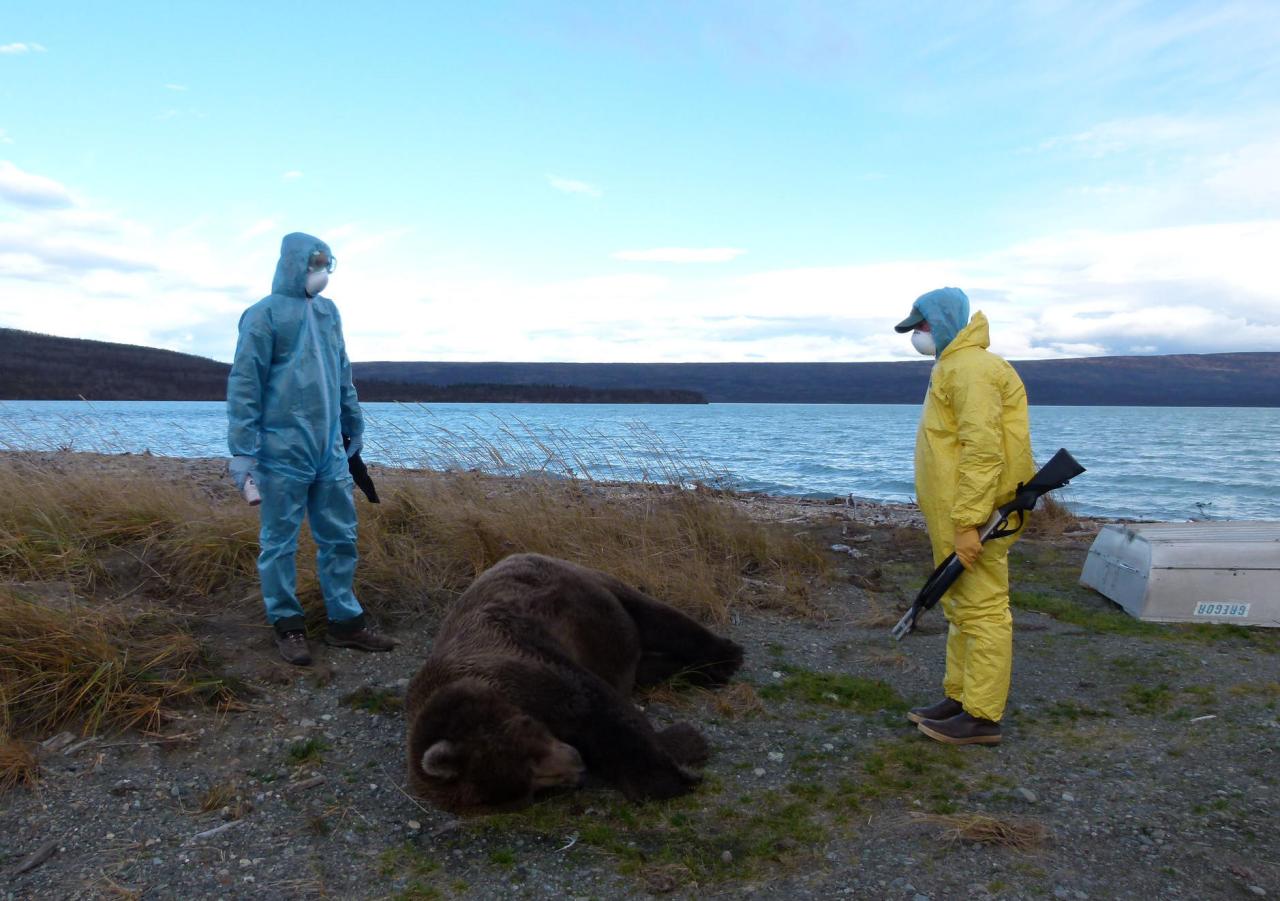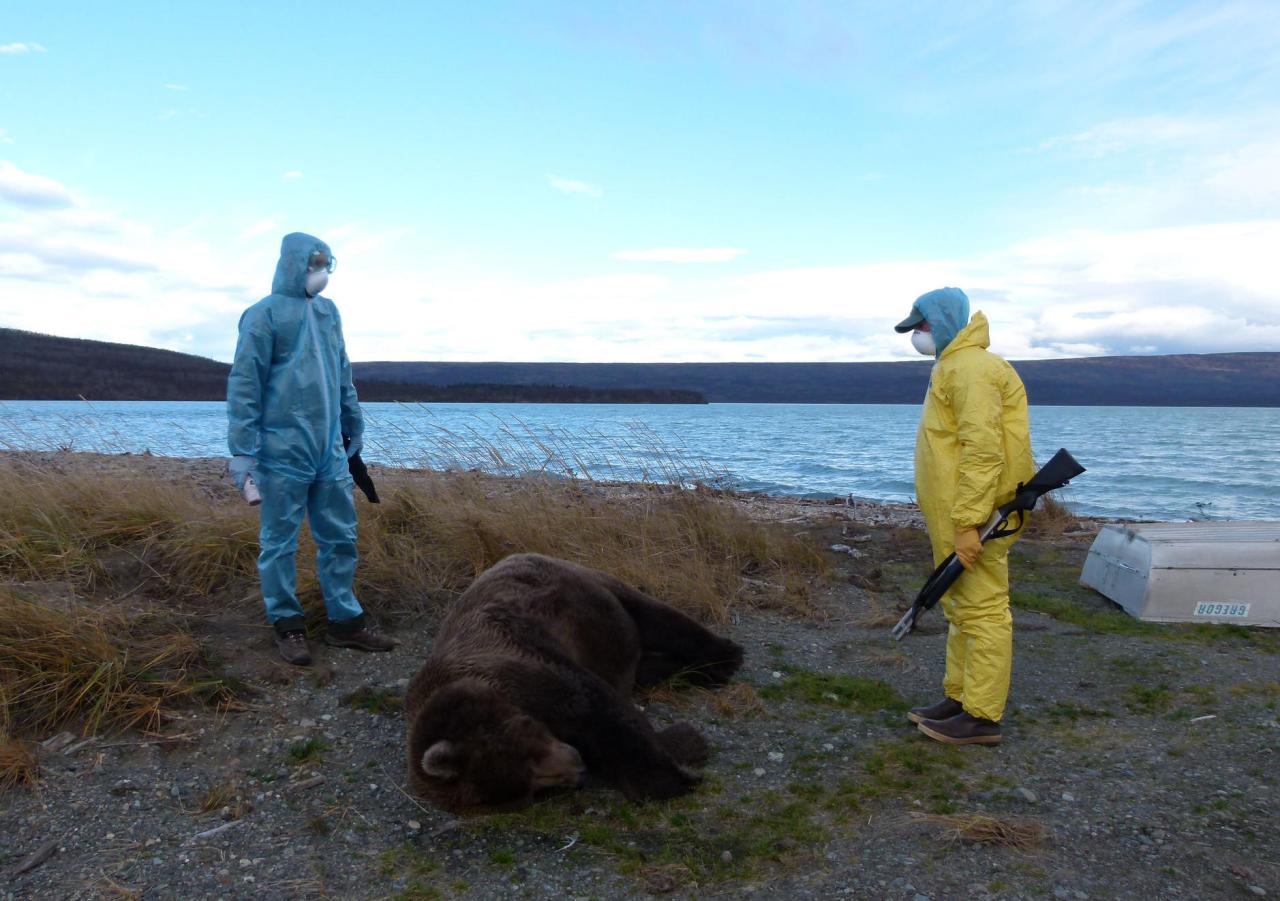Who Died on the Bear sets the stage for this enthralling narrative, offering readers a glimpse into a story that is rich in detail and brimming with originality from the outset. This captivating account transports us back in time to a fateful encounter between a lone individual and a formidable predator, a moment that would forever alter the course of their lives.
As we delve into the circumstances surrounding this tragic event, we will explore the intricate details of the investigation, the legal and ethical implications that ensued, and the profound impact it had on the local community and beyond. Join us as we unravel the mystery behind Who Died on the Bear, a story that continues to captivate and intrigue generations later.
Historical Context
In the annals of human-wildlife encounters, the tragic death of Timothy Treadwell at the hands of a grizzly bear in 2003 stands as a sobering reminder of the inherent dangers that accompany close interactions with wild animals.
The incident unfolded in the remote Katmai National Park and Preserve in Alaska, a vast wilderness renowned for its abundant wildlife, including a significant population of brown bears. Treadwell, a self-proclaimed bear enthusiast, had spent years living among the bears, documenting their behavior and advocating for their protection.
Timothy Treadwell
Born in 1957, Timothy Treadwell grew up in Long Island, New York. His passion for wildlife led him to Alaska in the early 1990s, where he became captivated by the majestic brown bears.
Treadwell believed that bears were misunderstood creatures, and he dedicated himself to educating the public about their intelligence and social complexity. He spent countless hours observing and interacting with the bears, often approaching them closely and even sleeping in their vicinity.
Investigation and Aftermath

The incident sparked an extensive investigation involving local authorities and wildlife officials. Witnesses reported hearing screams coming from the campsite around the time of the attack, and evidence gathered at the scene suggested a violent struggle had taken place.
Witness Accounts
- Campers nearby reported hearing loud noises and commotion coming from the victim’s campsite.
- One witness claimed to have seen a large bear running away from the area shortly after the screams.
- Another camper reported seeing the victim lying on the ground with severe injuries.
Evidence Gathered
- Footprints and scat found at the campsite matched those of a grizzly bear.
- The victim’s clothing was torn and covered in blood, indicating a physical altercation.
- DNA analysis confirmed the presence of bear saliva on the victim’s body.
Legal and Ethical Implications, Who died on the bear
The incident raised important legal and ethical questions. The bear involved was not euthanized as it was determined to have acted in self-defense. However, park regulations were reviewed and revised to enhance safety measures for visitors.
Impact and Legacy
The Bear Brook murders had a profound impact on the local community and beyond. The gruesome nature of the crimes and the mystery surrounding the victims’ identities sent shockwaves through the region. The case also raised important questions about the adequacy of law enforcement resources and the need for better coordination between different agencies.
Immediate Impact
In the immediate aftermath of the murders, the local community was gripped by fear and anxiety. Residents were afraid to let their children play outside, and some even refused to go out at night. The murders also had a significant economic impact on the area, as tourism and business activity declined.
Long-Term Consequences
The Bear Brook murders had a number of long-term consequences. The case led to increased funding for law enforcement agencies in the region, and it also prompted the creation of a new task force to investigate unsolved homicides. The case also raised awareness of the issue of unidentified human remains, and it led to the creation of a national database to help identify missing persons.
Commemoration
The Bear Brook murders have been remembered and commemorated in a number of ways. A memorial to the victims was erected in the town of Allenstown, New Hampshire, and a documentary film about the case was released in 2012. The case has also been the subject of several books and articles.
Epilogue: Who Died On The Bear
The story of Who Died on the Bear serves as a poignant reminder of the delicate balance between humans and wildlife, and the consequences that can arise when that balance is disrupted. This incident has left an enduring legacy, shaping policies, regulations, and attitudes towards wilderness safety and the preservation of our natural heritage.
Through the passage of time, the memory of this tragic event has been preserved through stories, anecdotes, and memorials, ensuring that the lessons learned from that fateful day continue to resonate with us today. Who Died on the Bear is a cautionary tale that underscores the importance of respecting the boundaries of the wild and the enduring power of nature’s embrace.
User Queries
Who was the individual who died in the bear encounter?
The identity of the individual who died in the bear encounter is not disclosed in the provided Artikel.
Where and when did the incident occur?
The location and time period of the incident are not specified in the provided Artikel.
What were the circumstances surrounding the encounter?
The circumstances surrounding the encounter, including how the individual encountered the bear, are not detailed in the provided Artikel.
What legal and ethical implications arose from the incident?
The legal and ethical implications resulting from the incident are not mentioned in the provided Artikel.
How did the incident impact the local community?
The immediate and long-term impact of the incident on the local community is not discussed in the provided Artikel.

